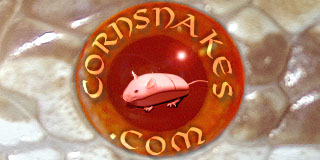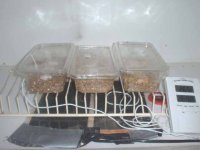Ebo Jager submersible aquarium heaters
This heater is the most durable and accurate heater on the market.
I've read in newsgroups of decades of steady relable use and they haven't failed yet type stories with this accurate "incubator heater".
Minute adjustments to temperature are possible with these highly refined instruments.
The heaters do not vary more than 1° F. , actually less, = a very accurate consistent heat source.
Boasts 2 mm thick shock-resistant glass. All Ebo-Jager aquarium heaters have a 6' double insulated cord. Overbuilt to last.
Ebo Jager has over 50 years of experience manufacturing high quality aquarium heaters.
They (ebo-Jager) has sold millions and millions of these over the years and many long term aquarum fanciers wouldn't consider using any other brand = many Loyal Customers, myself included.

I use these for a reliable heating source for "double boiler" type, tub in a tub, "Baby birdie Brooder boxes" for the hand fed baby pacific parrotlets that I raise.
Brooder = Incubator
The tubs are twistie wire tied together to snug up the tubs , as to have the water run up the side walls of the inside tub as to radiate heat and provide a even ambient temperature.
Top off water daily or as needed.
I use a thick beach towel tossed over the lid top and sides of the tubs to provide a insulation factor to help in providing a consistent bottom to top, toe to beak, overall ambient temperature in the brooder box.
An Insulated ice chest with a suitably sized plastic tub insert should work dandy.
A Styrofoam chest would keep it inexpensive.
An angled drip shield and/or covered egg incubation tubs with side ventilatilation/humidity control (holes) could be used to prevent condensation droplets from dropping on eggs, if that's a problem in ones design.
Two lesser wattage heaters,
(a couple of 25's or fifty watters,even hundred watters depending on size of incubator, tubs)
could be used to make your system double redundant, fail safe...one at each end and eliminating (or not) the water circulation pump would simplify design slightly and probably lower the cost of assembly.
Submersible low end water pumps start about $20U.S. on up real fast where I've shopped. Submersible pumps can generate heat from the friction of their motors running and may possibly be the cause of the high temps. in the above original post if its not a defective submersible heater.
I paid about 12-13 dollars U.S. last year for little 25 watt units, 50 watters were under 18- 20 bucks or so delivered, if I remember right.
When you absolutely, positively, have to have a reliable submersible heat source for your homemade "Corn Snake egg incubator" I highly recommend that one uses an Ebo-Jager submersible heater.
I've used these for years and have never had one fail yet.
They can sometimes be hard to find in stores, but I've found them/ordered them in at a great discounted price, 30-40 % off retail, over at yahoo shopping.







